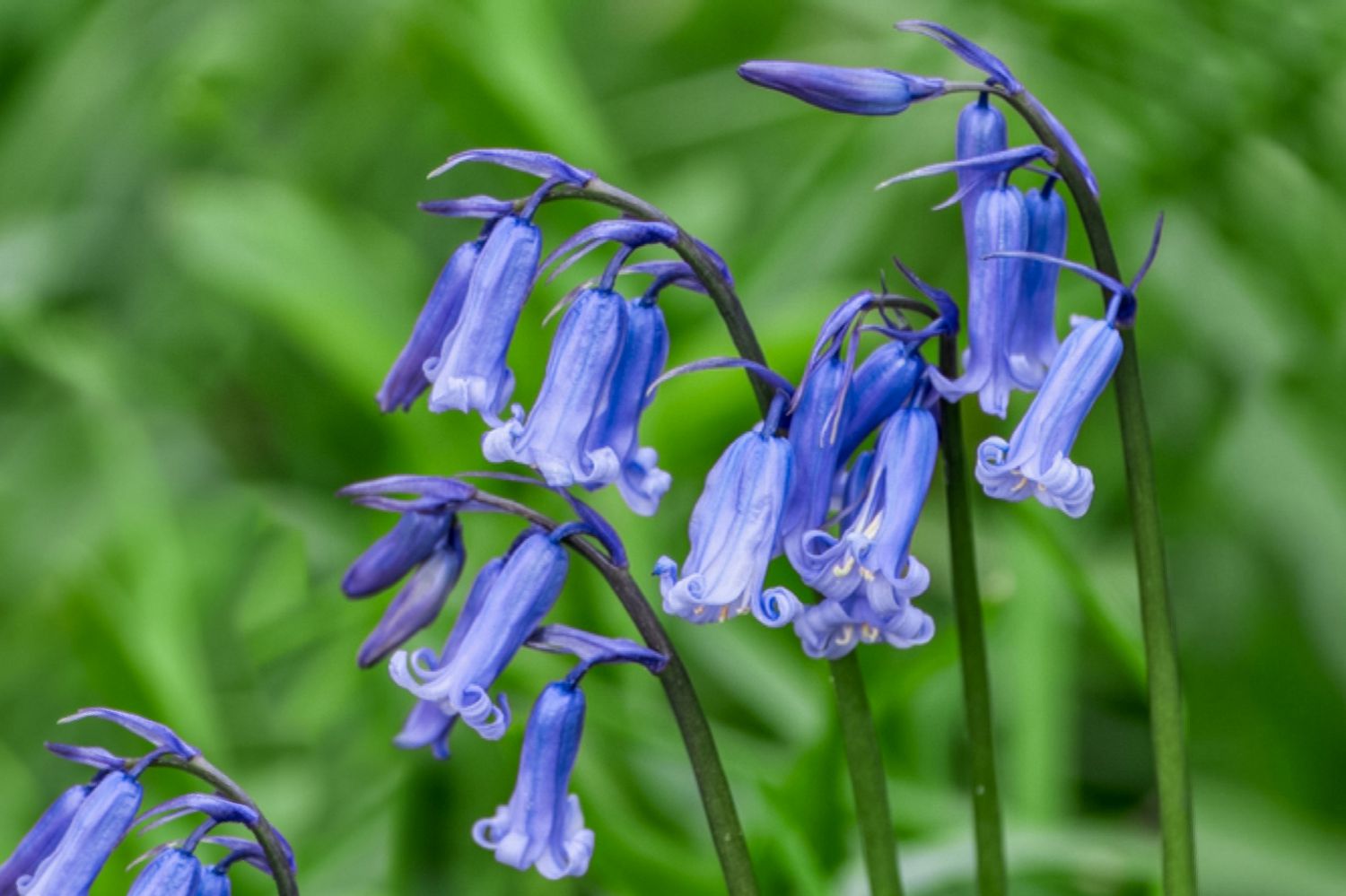
Common Bluebells, also known as Hyacinthoides non-scripta, are a captivating and beloved flower that can be found in woodlands, meadows, and gardens. These delicate blue flowers have a rich cultural significance and are a symbol of spring and renewal. While they may seem familiar, there are some surprising facts about Common Bluebells that you may not know. From their fascinating history to their ecological impact, Common Bluebells have much more to offer than meets the eye. In this article, we will uncover nine surprising facts about these enchanting blooms, shedding light on their hidden wonders and unique characteristics. So, get ready to delve into the world of Common Bluebells and discover the secrets that lie within these beautiful flowers.
Key Takeaways:
- Common Bluebells are native to Europe and are protected in the UK, with a sweet fragrance that attracts bees and blooms in spring, creating stunning carpet-like displays.
- These enchanting flowers have medicinal properties, mystical folklore associations, and symbolize humility and gratitude, reminding us to appreciate the wonders of nature.
Common Bluebells are Native to Europe
The first surprising fact about Common Bluebells is that they are native to Europe. These beautiful spring flowers are found in woodlands and meadows across the continent. Their vibrant blue petals add a touch of color to the landscape.
They Are a Protected Species in the UK
In the United Kingdom, Common Bluebells are protected under the Wildlife and Countryside Act of This means that it is illegal to intentionally uproot or destroy these flowers in the wild. This protection ensures their conservation and preservation for future generations to enjoy.
Common Bluebells Are Fragrant
One of the most alluring characteristics of Common Bluebells is their sweet fragrance. When you encounter a patch of these flowers in bloom, you’ll be greeted by a delightful aroma that is reminiscent of a spring morning. Their scent is often described as fresh and enchanting.
They Are a Favorite of Bees
Common Bluebells play a crucial role in providing nectar and pollen for bees. Bees are attracted to the vibrant blue color of the flowers and are frequent visitors. Their foraging helps in the pollination process, ensuring the reproduction and survival of these beautiful plants.
Common Bluebells Bloom in Spring
These flowers are a true sign that spring has arrived. Common Bluebells typically bloom in late April or early May, carpeting woodlands with their stunning blue hues. Their arrival is eagerly anticipated by nature enthusiasts and signifies the awakening of the season.
They Can Form Extensive Carpet-Like Blooms
When Common Bluebells bloom, they create breathtaking displays of color. These flowers tend to grow close together, creating carpet-like blankets of blue in certain areas. Walking through a forest filled with these picturesque blooms is a sight to behold.
Common Bluebells Have Medicinal Properties
For centuries, Common Bluebells have been used in traditional medicine for various ailments. The bulbs of these flowers contain medicinal compounds that have been known to possess diuretic and anti-inflammatory properties. However, it’s important to note that professional medical advice should always be sought before using them for any health purposes.
They Are Believed to Be Enchanting and Mystical
In folklore and mythology, Common Bluebells have long been associated with enchantment and mysticism. It is believed that these flowers have the power to ward off evil spirits and bring good fortune. In some traditions, they are even thought to have magical properties.
Common Bluebells Are Symbolic of Humility and Gratitude
These delicate and humble flowers have come to symbolize humility and gratitude. Their simple beauty and gentle presence remind us to appreciate the small wonders of nature and express gratitude for the things we often take for granted.
So there you have it – 9 surprising facts about Common Bluebells. From their native origins in Europe to their enchanting fragrance and symbolic significance, these flowers continue to captivate and inspire. The next time you come across a carpet of blue in a woodland, take a moment to appreciate the wonders of the Common Bluebell.
Conclusion
In conclusion, the common bluebell is a fascinating and beautiful plant that holds several surprising facts. From its ability to grow in dense carpets to its unique mechanism of spreading seeds, the common bluebell continues to capture the interest of botanists and nature enthusiasts alike. Its vibrant colors and delightful fragrance make it a popular choice for gardens and woodland areas.
So the next time you come across a field of bluebells or spot one in your garden, take a moment to appreciate these amazing flowers and remember the interesting facts you’ve learned about them. The common bluebell truly is a natural wonder worth discovering.
FAQs
Q: What is the scientific name of the common bluebell?
A: The scientific name of the common bluebell is Hyacinthoides non-scripta.
Q: Where can I find common bluebells?
A: Common bluebells can be found in woodlands, meadows, and gardens throughout Europe, particularly in the United Kingdom.
Q: Do common bluebells have any medicinal properties?
A: While common bluebells are not known for their medicinal properties, they have been used in folk medicine to treat various ailments, such as rheumatism and diarrhea.
Q: Are common bluebells endangered?
A: Common bluebells are considered a protected species in the United Kingdom but are not currently classified as endangered. However, habitat loss and illegal harvesting can pose threats to their populations.
Q: How long do common bluebells bloom?
A: Common bluebells typically bloom from April to May, providing a beautiful spectacle of blue hues during the springtime.
Q: Can I grow common bluebells in my garden?
A: Yes, common bluebells can be grown in gardens. However, it is important to source them from reputable suppliers and ensure they are planted in suitable conditions, such as in partially shaded areas with moist, well-draining soil.
Enchanted by common bluebells? Why not explore more wonders of nature? Discover the secrets of temperate woodland habitats, home to diverse flora and fauna. Uncover the allure of another captivating blue flower, the bluebonnet, with its own fascinating stories. Finally, celebrate the magic of spring, as life reawakens and beauty blooms anew. Each journey offers a unique glimpse into the marvels that surround us, inviting you to appreciate and connect with the natural world in new, exciting ways. So, which path will you choose next?
Was this page helpful?
Our commitment to delivering trustworthy and engaging content is at the heart of what we do. Each fact on our site is contributed by real users like you, bringing a wealth of diverse insights and information. To ensure the highest standards of accuracy and reliability, our dedicated editors meticulously review each submission. This process guarantees that the facts we share are not only fascinating but also credible. Trust in our commitment to quality and authenticity as you explore and learn with us.


